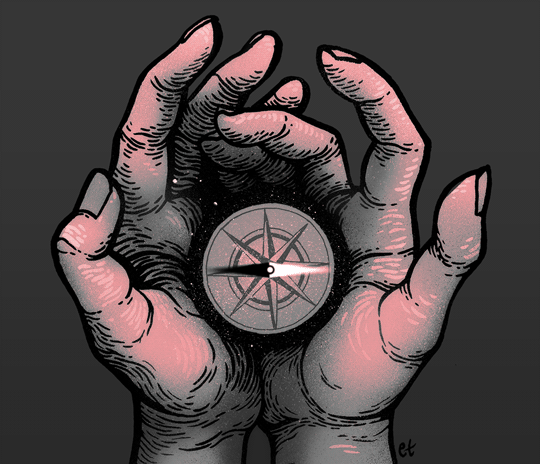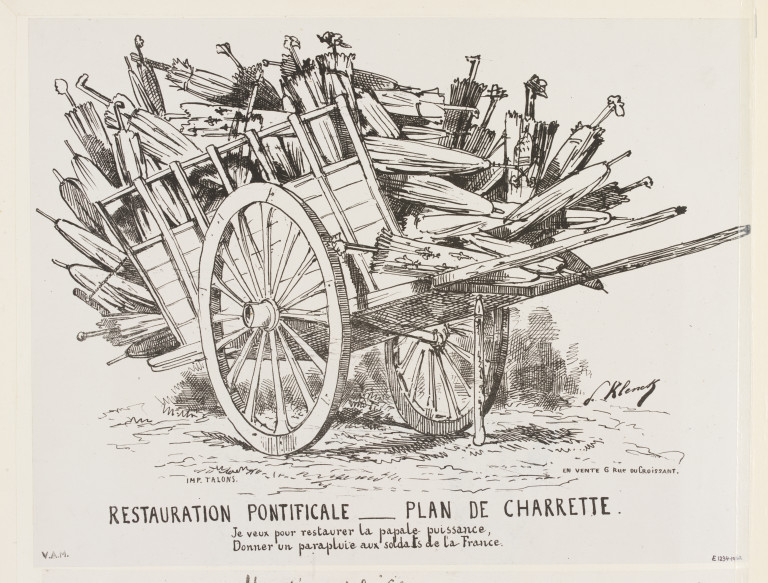
Boomennial.
I made it up.
In attempting to describe where we are along the spectrum of cultural evolution, this new term is meant to combine the umbrella labels of the two largest factions of the current American Workforce; dependent on each other – on which we all are dependent, actually – for effective institutional, intergenerational knowledge transfer in virtually every industry.
Last week, the Themed Entertainment Association held our annual Summit Conference at Disneyland (…where else would one expect such a meeting to take place?). One of the Hot Topics presented on our stage was a panel on the changing composition of the Workforce and an exploration of adjustments to methodologies, mindsets and existing corporate cultures that are essential to success in embracing new demographics that have new or different ways of thinking than has been SOP since the Industrial Age…or at least the ’80’s.
Before We Begin
Assumptions, Definitions and Postulations:
- “Millennial” seems to have become a pejorative, negatively-laden word. Big time. No matter how the word is meant when used, it seems to carry a volatility and be met with defensiveness and even anger when laid upon the pursuant age group. [I don’t recall any previous generational generalization being met with such antipathy; not X, not Y, and not even “Boomer”…a term not without its own corona of entitlement, yet that label never seemed to inspire such ire as does the “M” word.]
- I’d like to find another word; somehow, I doubt that will be successful.
- A personal POV, but I don’t see “Millennial” as a specific age group, anymore. As posited in this post of last November,
“No longer really applicable to a specific, definable age-demographic; if anything, “Millennial” is a point of view, a way of seeing things, a combination of aspiration, inquisitiveness, a sense of one’s value … that pervades vast segments of society and culture…largely irrelevant anymore to age or “generation” and more broadly so to exponentially greater segments of the professional workforce who plan on remaining in that workforce for some time to come.”
- …In other words; pretty much anyone under 40 and many of the Digital Immigrants and Industry Elders has – by now and to at least some degree – adopted and embraced a more nimble, flexible way of thinking and communication…or is in the process thereof.
Some facts:
- By 2020, 46% of the workforce in the US will be Millennial.
- This year, the number of Millennials in the workforce is greater than that of Boomers
- By 2025, more than half the workforce population will be reporting to someone younger than themselves.
- The smallest segment of the Workforce with the greatest amount of Industry / Institutional Knowledge have already crested 60. Far more active and healthy than the 60’s of the ’60’s; this valuable population of Elders wants to continue working and contributing…and sharing knowledge. We only have 10 – 15 years to see that knowledge and know-how shared: we must get moving.
…and On to the Conversation.
So here’s The Thing: irrespective of one’s perception, perspective or impression of Millennials; the fact is inarguable; these aspirational new thinkers are coming and must be welcomed and embraced. So, whatever generalizations may be levied on this evolving workforce must be set aside with the larger view that We Are Bound to Make This Work.
And here’s the Other Thing: the Elders may need to learn to listen differently, better, more generously and acutely. This means shutting down preconception and silencing the Voice in One’s Head and truly hearing the newcomer before deciding…
- when and how to share what knowledge,
- how open each might be to learning and collaboration,
- how best to relate, to establish positive, working relationships.
Road-builders survey the topography before beginning to design the road or laying pavement. ’Tis the same with mentorship. Know with whom you are dealing, establish a respectful relationship before sharing knowledge…and be not only prepared, but prepared to find new excitement or fulfillment in one’s own learning from the person being mentored.
It truly is a two-way process.
Active Listening is critical to the building of a mutually-respectful relationship.
Leadership must be Collaborative.
“… people, having been and felt fully heard throughout a given process are far more likely to accept, embrace and support the path and solution ultimately taken than when simply directed to do something a given [or predetermined] way.”
And then there’s This Last Thing: Everyone is involved in this metamorphoses; all the X’s and Y’s now in Middle Management are called upon to advocate, to create, broker and foster these relationships. Not yet at Executive/Mentor level, though more hands-on-with-cachet than any other subset; knowledgeable managers are in a position to lobby for, initiate and institute a pervasive, effective culture of mentorship within and around company and project environments. In the field, they are also in a position to know how to augment and with whom to raise the level of the body of knowledge and experience to be shared on their teams.
Mentorship must be Part of the Program. All Programs. Mentorship is no longer lunch-every-other-Thursday-with-one’s-Mentor as in the Olde Days.
Mentorship is Collaborative and Collegial. Mentorship is not “teaching.” Rather, it is two (or more) intelligent people – one full of fresh knowledge and aspiration, the other with practical experience and a way of addressing the mission, goal, project or task, working together to accomplish something.
Note, too, use of the term “a” way as opposed to “the” way; for through the collaborative process the prospect exists that there might be discovered an evolution of approach. Both or all participants must be willing to learn something at any time.
For example: “So, here’s how I do it; I’ve had a lot of success with this methodology. If you have a different idea, let’s take a look at that, too…” goes a lot further than, “…this is how it’s done.”
Just sayin’.
Mentorship is Apprenticeship and Example. It takes place all the time, every day, throughout the course of working together. An encounter in a hallway, perhaps an ad hoc site visit or vendor tour, “…how’s it going? What are you working on, just now…?”
Along with this comes the invaluable to share with those who are new the incomparable sense of accomplishment when one has put in the work and effort over a significant amount of time to bring a project to conclusion or a program to life.
In a world filled with right-swipes, clicks and likes; to discover the rewards of total immersion, arduous work through toward and ultimate accomplishment of is a treasure to share. Perhaps approach the shepherding through the culture in such a way as to see the manifestation of intrigue as the delving-in begins, then witness the deep-seated excitement and visible thrill of accomplishment at success is realized.
Mentorship is Community-based. Every member of a staff or team is a potential mentor at any given time. Navigating the pathways of a new company takes time and information, knowing the names and jobs of all whom one passes in the hallway adds immensely to the sense of Belonging and Partnership. If such an attitude can become woven into the culture of a company, organization or project; productivity will increase and morale can skyrocket.
Finally, as articulated in most things written in this space: Listen, First.
People who feel authentically heard – especially by what is traditionally an authority figure – are far more likely to have respect for that person and hear what s/he has to say. Mentors / authority figures who approach first meetings – any meetings – without a script and who first Listen will quite likely discover that they have something different and more relevant to say as well as see that what has been said is more readily embraced than may otherwise have been had their first comments or direction been based on pre-meeting assumption about the mentee rather than an actual in situ experience with them.
Respect begets respect. It’s uncanny!
So, really, I’m thinking that accommodating the burgeoning evolution of the workplace isn’t the onerous obstacle it can so often be perceived to be. It’s nuanced, sensitive, organic, and eminently do-able.
IMHO, the steps of the solution to successfully accommodating this workforce evolution are:
- Exploring and Appreciating one’s Assumptions
- Active listening without preconception
- Establishing Respectful Relationships – a community of Respectful Relationships.
- Embracing an inherent culture of Mentorship wherein new knowledge flows both ways and at all times.
Boiled down to this, it doesn’t seem so challenging. I ain’t sayin’ it’s easy, per se; but it seems more adjustment than overhaul.
———————————————————
I want to share this video of Simon Sinek, “Millennials in the Workplace” We used a clip of it at the Summit to open our session; finding it an exquisitely articulate, sympathetic and insightful assessment of the dynamics that have brought us to this place, along with a suggested pathway through it. Worth a watch.
———————————————————
And finally, I want to acknowledge Julie Reyes and her team of kickass professionals who did all the research and presented this panel to the Summit, last week. These are the people with the direct experience of actually facilitating this workforce evolution, case by case.
- Julie Reyes – Vice President, 11th Hour – julie@11thr.com – 310.821.6900
- Mary Cluff – Managing Director – Mousetrappe – marycluff@mousetrappe.com – 818.972.2525
- Rani Bal – Independent Talent Consultant to the Fabulous – r.bal9777@gmail.com – 562.569.9777
———————————————————
Popular throughout the Milky Way and Andromeda Galaxies,
“IMHO : Creating Compelling Experience”
remains a free download from the Apple bookstore and iTunes.
Seriously: Free.
Read it. [Link to iBooks site ]

















 Participation in Creating Solutions
Participation in Creating Solutions While the way things have been done, historically, may have worked and worked well; the assumption that This is The Only Way or inherently even the best way is simply not embraced by those comprising a greater and growing percentage of the professional resources each day.
While the way things have been done, historically, may have worked and worked well; the assumption that This is The Only Way or inherently even the best way is simply not embraced by those comprising a greater and growing percentage of the professional resources each day.